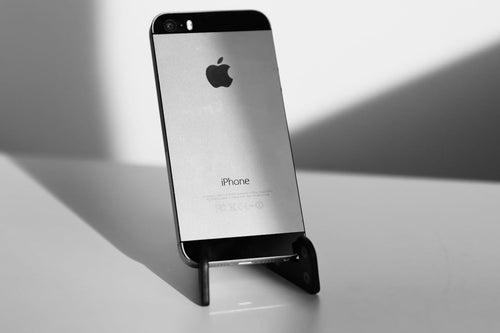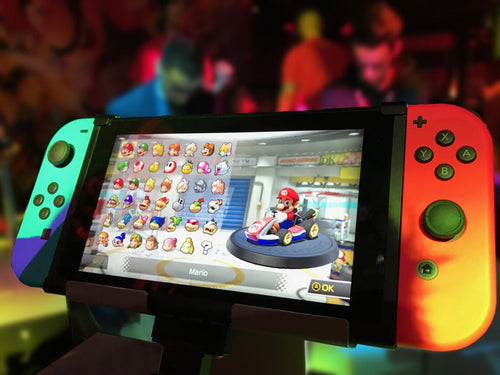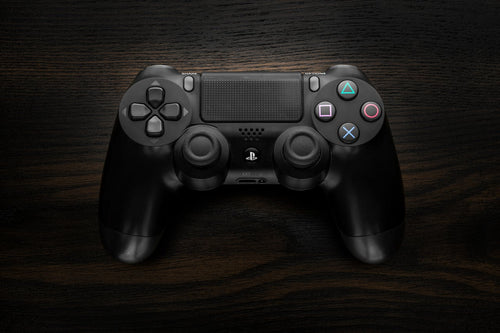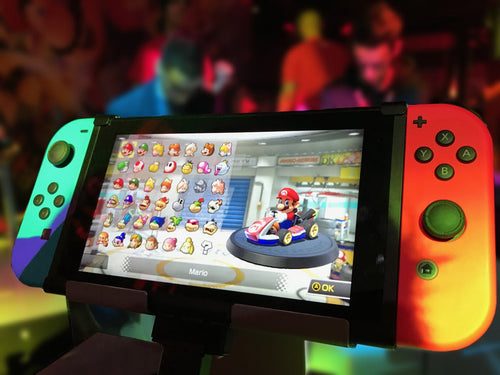Rokid Ar Lite y Inmo Go 2: Establecer el nuevo estándar para las gafas inteligentes en 2025 y más allá

Cuando las gafas de realidad aumentada (AR) llegaron a la escena por primera vez, eran dispositivos voluminosos y experimentales con una practicidad limitada. Iteraciones tempranas, como Google Glass, provocó curiosidad pero luchó para integrarse en la vida cotidiana debido a diseños torpes, altos costos y funcionalidad restringida. Avance rápido hasta hoy, y las gafas inteligentes han sufrido una evolución notable.
Los dispositivos modernos como Rokid Ar Lite y Inmo Go 2 son más elegantes, más inteligentes y más fáciles de usar que nunca. Representan una nueva era en la que las gafas AR no son solo dispositivos, sino herramientas esenciales que combinan el estilo, la innovación y la utilidad del mundo real.
Estos últimos lanzamientos destacan hasta dónde ha llegado la tecnología, estableciendo un punto de referencia para lo que podemos esperar de AR Wearables en 2025 y más allá. Echemos una mirada más de cerca a estos dos dispositivos innovadores y exploremos las tendencias que dan forma al futuro de las gafas inteligentes.
Un vistazo al rokid ar lite y lo inmo go 2
Echemos un vistazo rápido a las gafas inteligentes recién lanzadas bajo la lente de algunas reseñas recientes:
Rokid Ar Joy 2: AR inmersivo hecho accesible

Las gafas Rokid Ar Joy 2 redefinen el entretenimiento portátil al transformar la forma en que experimenta Android TV sobre la marcha. Junto con el dispositivo de estación compacta de Rokid, estas gafas AR le permiten llevar un televisor completo en su bolsillo. La estación, que actúa como el cerebro detrás de las gafas, combina la funcionalidad de un Chromecast, Remote y Power Bank en un solo dispositivo. Equipado con una batería de 5000 mAh, USB-C, salida de micro HDMI y controles intuitivos, es un compañero conveniente para las experiencias de medios inmersivos en cualquier lugar.
Lo que distingue al Rokid Ar Joy 2 es su capacidad para crear una gran pantalla virtual que se siente surrealista pero increíblemente práctica. A diferencia de los proyectores que requieren espacios oscuros y superficies planas, las gafas Joy 2 dan vida a sus programas, juegos y aplicaciones favoritos, ya sea en un avión, en un café o descansando en casa. Las gafas son elegantes y livianas, lo que garantiza la comodidad para las sesiones de visualización extendidas. La combinación de portabilidad y tecnología de vanguardia ofrece un "factor sorpresa" que hace que sea difícil volver a las configuraciones de visualización tradicionales.
INMO AIR2: Su teatro AR portátil y asistente diario

El INMO AIR2 eleva las gafas AR a un nuevo nivel de conveniencia y versatilidad, ofreciendo una solución portátil de entretenimiento y productividad todo en uno. Sus exhibiciones de micro oleadas y altavoces incorporados lo transforman en un teatro personal, perfecto para disfrutar de aplicaciones preinstaladas como YouTube y Tiktok.
Más allá del entretenimiento, el Air2 brilla como un refuerzo de productividad con operación manos libres, un asistente inteligente y características de traducción incorporadas. Incluso funciona como un teleprompter, un tutor personal y un compañero útil para aventuras al aire libre. Con capacidades como la grabación de vistas en primera persona, navegación en tiempo real y transmisión perfecta, El INMO AIR2 es una herramienta elegante y poderosa para cualquier persona que busque integrar la tecnología AR de vanguardia en su vida diaria.
Tendencias emergentes en gafas inteligentes
Por lo que sabemos sobre estos wearables recientemente lanzados, podemos comenzar a pintar una imagen de lo que nos depara el futuro de AR Wearables.
Diseños livianos y elegantes
Los diseños voluminosos y poco prácticos ya no son aceptables en el mercado de gafas inteligentes. Tanto el Rokid Ar Joy 2 como Inmo Air2 enfatizan los marcos elegantes y livianos, lo que indica un cambio hacia Deseables que priorizan la comodidad y el estilo. Esto es esencial para la adopción más amplia del consumidor.
Funcionalidad enfocada
En lugar de tratar de hacer todo, las gafas inteligentes ahora se dirigen a necesidades específicas. Rokid Ar Joy 2 Se centra en el entretenimiento y la portabilidad, mientras que INMO Air2 enfatiza la conveniencia de manos libres y las características impulsadas por la IA para la máxima productividad. Es probable que esta especialización crezca, con dispositivos adaptados a industrias como la atención médica, la educación y los juegos.
Integración perfecta con la vida cotidiana
El objetivo de las gafas inteligentes es mejorar la realidad sin interrumpirla. Características como traducción en tiempo real, notificaciones discretas y navegación aumentada insinúan un futuro en el que AR se siente tan natural como verificar su teléfono.
Duración de la batería y eficiencia
La duración de la batería ha sido un desafío constante para los wearables AR. Innovaciones como los procesadores de eficiencia energética en el INMO AIR2 demuestran cómo los fabricantes están abordando este problema, y el Rokid Ar Joy 2 con una batería de 5000 mAh, los dispositivos ahora tienen la capacidad de durar un día entero de uso.
¿Qué podemos esperar de las gafas inteligentes en 2025?
A medida que miramos hacia 2025, la industria de las gafas inteligentes evoluciona de manera emocionante y transformadora. A medida que las escalas de fabricación y la tecnología avanzan, es probable que las gafas inteligentes sean accesibles para una audiencia más amplia a través de una variedad de puntos de precio. La potencia de procesamiento mejorada y las capacidades de gráficos también funcionarán para apoyar las experiencias de AR inmersivas, ampliar los casos de uso en juegos, trabajo remoto, educación y más.
Esto puede conducir a una conectividad más perfecta con teléfonos inteligentes, relojes inteligentes y dispositivos IoT para crear ecosistemas unificados e intuitivos para los usuarios. Además, con las gafas inteligentes cada vez más comunes, los fabricantes priorizarán la privacidad y la seguridad de los datos para abordar las crecientes preocupaciones de los consumidores.
Sam Altman, CEO de Operai, recientemente destacó la transformación potencial de inteligencia general artificial (AGI), enfatizando su capacidad para remodelar las industrias y cómo interactuamos con la tecnología. A medida que las gafas AR integran una IA más avanzada, podrían convertirse en herramientas indispensables, cerrando la brecha entre los humanos y los sistemas agitados de manera intuitiva y natural.
El camino por delante y el futuro de las gafas AR
El Rokid Ar Joy 2 e Inmo Air2 muestran la vanguardia de lo que las gafas inteligentes de hoy pueden ofrecer, desde el entretenimiento portátil hasta herramientas de productividad versátiles. Estos dispositivos destacan el enorme potencial de AR para transformar la vida cotidiana, señalando un futuro donde la tecnología AR se integra perfectamente en nuestras rutinas.
Con avances en diseño, funcionalidad y experiencia del usuario en el horizonte, 2025 promete ser un año histórico para la industria de las gafas inteligentes. A medida que estos dispositivos se vuelven más asequibles, poderosos y conectados, nos acercarán a un mundo donde AR no es solo una novedad sino una parte central de cómo interactuamos con el mundo digital.
¿Qué opinas sobre la evolución de las gafas inteligentes? ¡Comparte tus pensamientos en los comentarios a continuación!

































































